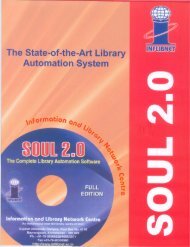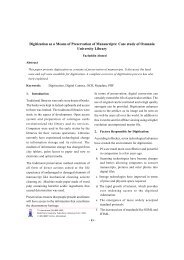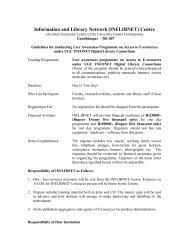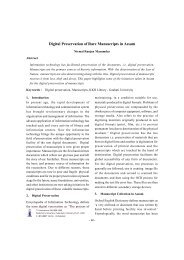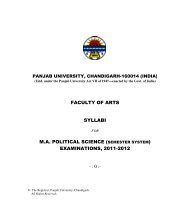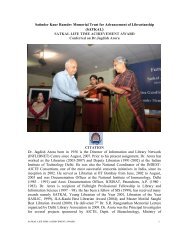Vol.18- No.1 (Jan-Mar2011) - INFLIBNET Centre
Vol.18- No.1 (Jan-Mar2011) - INFLIBNET Centre
Vol.18- No.1 (Jan-Mar2011) - INFLIBNET Centre
You also want an ePaper? Increase the reach of your titles
YUMPU automatically turns print PDFs into web optimized ePapers that Google loves.
The Cloud ComputingIn generic term, cloud computing can be defined as “a modelfor enabling ubiquitous, convenient, on-demand network accessto a shared pool of configurable computing resources (e.g.,networks, servers, storage, applications, and services) that canbe rapidly provisioned and released with minimal managementeffort or service provider interaction.” (NIST)As far as a user is concerned, a cloud is a service that satisfies allof the following conditions:GGGGGit is delivered over a telecommunications network;users place reliance on the service for data access and/ordata processing;the data is under the legal control of the user;some of the resources on which the service depends arevirtualised, i.e. the user has no technical need to know whichserver is running or which host is delivering the service, orwhere the hosting device is located; andthe service is acquired under a relatively flexible contractualarrangement.The fundamental elements of cloud computing can becategorised as follows:PrimarySecondary• Virtualisation • Autonomic Systems• Grid technology • Web 2.0• Service Oriented Architectures • Web application frameworks• Distributed Computing • Service Level Agreements• Broadband Networks• Browser as a platform• Free and Open Source SoftwareCloud Service ModelsSoftware as a Service (SaaS)The applications are accessible from various client devicesthrough a thin client interface such as a web browser (e.g.,web-based e-mail). The user does not manage or control theunderlying cloud infrastructure including network, servers,operating systems, storage, or even individual applicationcapabilities, with the possible exception of limited user-specificapplication configuration settings.Platform as a Service (PaaS)PaaS provides an application platform, or middleware, as a serviceon which developers can build and deploy custom applications.Common solutions provided in this tier range from APIs andtools to database and business process management systems tosecurity integration, allowing developers to build applicationsand run them on the infrastructure that the cloud vendor ownsand maintains.Infrastructure as a Service (IaaS)It is the capability provided to the user to enable processing,storage, networks, and other fundamental computing resourceswhere the user is able to deploy and run arbitrary software,which can include operating systems and applications. The userdoes not manage or control the underlying cloud infrastructurebut has control over operating systems, storage, deployedapplications, and possibly limited control of select networkingcomponents.The conceptual model of cloud promotes availability and iscomposed of five essential characteristics, three service models,and four deployment models.Essential Characteristics of CloudGGGGGOn-demand self-service (i.e. automated response by serversto direct requests by clients)Broad network access (i.e. from anywhere, using any device)Resource pooling (i.e. the provider allocates resourcesaccording to demand, rather than assigning resources toparticular clients)Rapid elasticity (i.e. resources are scalable according todemand)Measured service (i.e. resource usage is metered)Figure: Cloud Service ModelsCloud Deployment ModelsThere are four primary cloud deployment models. Eachdeployment model necessarily exhibits the previously discussedessential characteristics. The basic differences lies in the scopeand access of cloud services, as they are made available to endusers.18Vol. 18, No. 1 (<strong>Jan</strong>uary to March 2011)


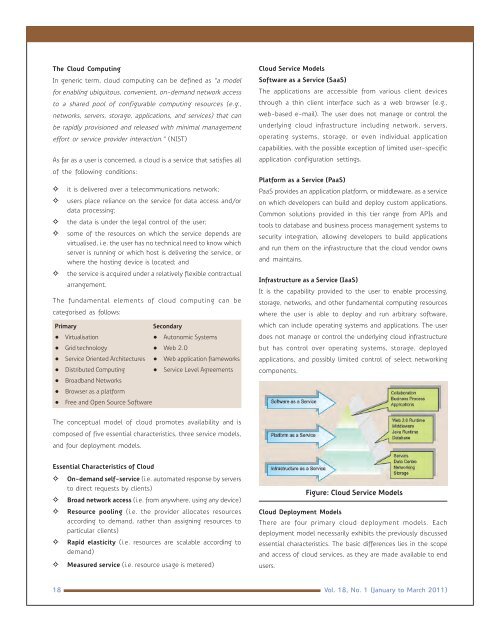
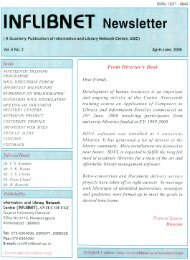

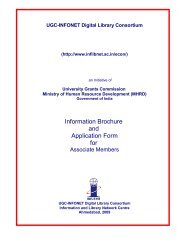
![Uni of Delhi_MA_History[1]. - INFLIBNET Centre](https://img.yumpu.com/48586372/1/190x245/uni-of-delhi-ma-history1-inflibnet-centre.jpg?quality=85)
